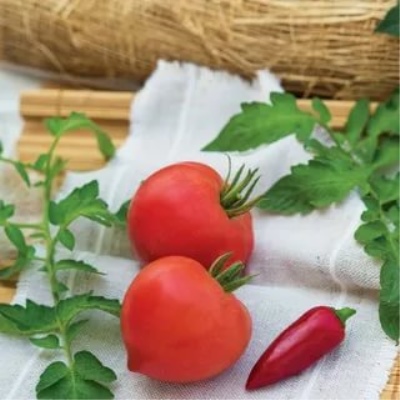
- Authors: V. V. Ognev, S. V. Maksimov, T. A. Tereshonkova, T. V. Chernova, LLC "Agrofirma Poisk"
- Year of approval: 2015
- Category: hybrid
- Growth type: determinant
- Appointment: fresh consumption, for whole fruit preservation
- Ripening period: early
- Ripening time, days: 90-95
- Growing conditions: for open ground, for film greenhouses
- Transportability: good
- Bush size: undersized
The newest varieties of tomatoes never tire of delighting gardeners. This fully applies to the Donskoy variety, some experience in the cultivation of which has already been accumulated. However, it is all the more important to carefully study the features of the plant, and to exclude errors.
Breeding history
This culture was allowed to grow in private gardens in 2015. Received it by hybridization. Several leading breeders were involved in the work at once:
V. V. Ogneva;
T. A. Tereshonkov;
S. V. Maksimova;
T.V. Chernov.
Description of the variety
Donskoy tomato is classified as a determinant crop. His bushes are undersized. Most often, plants reach only 0.5-0.6 m in height. They are characterized by an average level of foliage. The green foliage is medium in size.
The main qualities of the fruit
The berries of the Donskoy tomato are green at first. No spots appear at their base. When ripe, the fruits become red in color. They are large and weigh on average 120-130 g. Characteristic rounded or stereotypical heart-like shape, as well as a specific "nose".
It is also worth emphasizing:
articulation of the stalk;
simple type of inflorescence;
attractive keeping quality.
Taste characteristics
The flesh of the Donskoy tomato berries is dense. It contains 4, 5 or 6 seed chambers, so the seeds have relatively little effect on taste. The same can be said for the smooth skin. In general, they talk about the rich tomato flavor of the fruit.
Ripening and fruiting
This is one of the earliest tomato varieties. It will ripen in 90-95 days after the appearance of green shoots from the ground. The berries are usually picked in July and August. But often weather conditions change this established schedule.
Yield
Officially declared productivity 10.4 kg per 1 sq. It traditionally depends on the weather, on care and on the quality of the land used.
The timing of planting seedlings and planting in the ground
Seeds are often sown in containers in March. However, April is also suitable for such a procedure. Most often, the readiness of plants for transplanting into open ground is achieved in May or early June. This can be precisely determined only by the state of specific seedlings. It is also important to pay attention to the potential risk of cold weather returning.

Growing tomato seedlings is an extremely important process, because it largely depends on whether the gardener can harvest at all. All aspects must be taken into account, from seedbed preparation to planting in the ground.
Landing scheme
There is nothing unusual in this regard. It is recommended to plant 3-4 bushes per 1 sq. m. If this requirement is met, there are no restrictions on the seating scheme.

Growing and care
Tying up the bushes, as well as giving them a certain geometric shape, is very important. During the cultivation of seedlings, illumination with phytolamps is required for up to 18 hours. It is necessary to dive plants in separate containers when 2 true leaves appear. It is also recommended to feed seedlings with mineral fertilizers 2 times during development. It is not advisable to overmoisten it, but hardening and airing are needed.
Donskoy tomato can be cultivated both in ordinary greenhouses and in garden shelters under plastic wrap. Feeding with phosphorus-potassium fertilizers is carried out in accordance with the instructions. It must be remembered that the variety is prone to berry overload. To prevent them from rotting, drip irrigation is recommended. It allows you to save water, which is important in some cases.
It is appropriate to combine watering with fertilization. Mineral feed is stopped approximately 20 days before the expected harvest. The first fruits are larger than those that will be harvested next time. The berries must be removed strictly before the cold snap begins in August. This will prevent late blight damage.




A plant needs different micronutrients at each stage of growth. All fertilizers can be divided into two groups: mineral and organic. Folk remedies are often used: iodine, yeast, bird droppings, eggshells.
It is important to observe the rate and period of feeding. This also applies to folk remedies and organic fertilizers.


Growing regions
Such a tomato is zoned according to:
Siberia;
The Far East;
European part of Russia;
Volga region;
Volga-Vyatka region;
North Caucasus.
Review overview
Gardeners speak rather positively about the Donskoy tomato. The amicable laying of ovaries and decent germination are noted. They usually do not express any complaints about taste and consistency. However, the peel is often the source of dissatisfaction. True, it is noted that it is thanks to her that the crop is easy to transport.
Additionally, they pay attention to:
decent productivity;
attractive aroma of the harvest;
the ability to achieve optimal results when growing seedlings on your own;
ease of care.

























































































